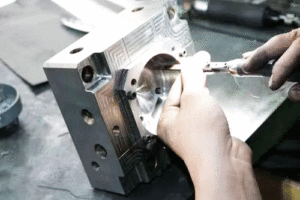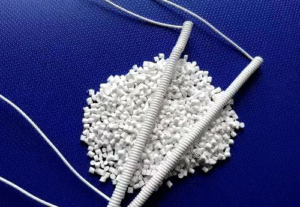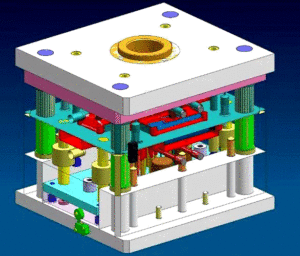
Polishing Treatment for Plastic Molds
Polishing Treatment for Plastic Molds With the widespread application of plastic products, such as daily-use items and beverage packaging containers, there is often a requirement
High-pressure inert gas (nitrogen) is injected into the molten plastic to form a vacuum section and push the molten material forward. And that finally realizes the processes of injection, pressure holding and cooling.
Due to the efficient pressure transmission of the gas, the pressure in the air passage can be kept consistent. And that can eliminate internal stress, prevent product deformation. Meanwhile, it can greatly reduce the pressure in the mold cavity. So there is no need for clamping force during the molding process. Besides, it can also reduce product weight and eliminate sink marks.
The gas-assisted equipment includes a gas-assisted control unit and a nitrogen generator. It is another system independent of the injection molding machine. And its only interface with the injection molding machine is the injection signal connection line.
After the injection molding machine transmits an injection starting signal or screw position to the gas-assisted control unit, it starts a gas injection process. Then, it gives another injection signal when the next injection process starts. And this cycle will go on.
The gas used in gas-assisted injection molding must be an inert gas (usually nitrogen). The maximum pressure of the gas is 35MPa. The maximum pressure of the special one is up to 70MPa with its nitrogen purity ≥98%.
The gas-assisted control unit is a device that controls the gas injection time and pressure. It has a multi-group gas circuit design that can control the gas-assisted production of multiple injection molding machines at the same time. While the gas-assisted control unit has a gas recovery function to reduce gas consumption as much as possible.
The gas-assisted injection molding process is to inject high-pressure gas while injecting the plastic melt into the mold. There is a complex two-phase interaction between the melt and the gas. Therefore, the process parameter control is very important. The control methods of each parameter are as follows:
Gas-assisted injection molding uses the so-called “short shot” method. That is, inject a certain amount of material (usually 70-95% during full shot) into the mold cavity. And then inject gas to achieve a full filling process.
The amount of melt injection has the greatest relationship with the size of the mold air passage and the cavity structure. The larger the cross section of the airway, the easier the gas to penetrate, and the higher the hollowing rate. Therefore, it is suitable to use a larger “short shot rate”. At this time, if using too much material, it is easy to cause melt accumulation. Besides, the sink marks will appear in places with a lot of material.
If the material is too small, it will cause blow-through. If the direction of the air passage is exactly the same as that of the flow material, it is most conducive to gas penetration. What’s more, the hollowing rate of the air passage is the largest. Therefore, in the mold design, keep the air passage and the flow direction as consistent as possible.
In the case of ensuring that the product has no defects, use a higher injection speed to make the melt fill the cavity as soon as possible. At this time, the temperature of the melt remains high, which is beneficial to gas penetration and mold filling. The gas still maintains a certain pressure after pushing the melt to fill the cavity. And that is equivalent to the pressure holding stage in traditional injection molding. Therefore, generally speaking, the gas-assisted injection molding process can save the pressure holding process of the injection molding machine.
However, some products still need to use certain injection molding pressure to ensure the quality of product performance for structural reasons. Don’t use high holding pressure, because overly high holding pressure will seal the gas needle. The gas in the cavity cannot be recovered, and it is easy to blow up when the mold is opened. High holding pressure will also hinder gas penetration. Increasing the holding pressure of injection molding may cause larger sink marks in product.
The gas pressure has the greatest relationship with the fluidity of the material. Materials with good fluidity (such as PP) use lower gas injection pressure.
High gas pressure, easy to penetrate, but easy to blow through. Low gas pressure may cause insufficient filling or sink marks on the surface of the product. High gas injection speed can fill the cavity when the melt temperature is high. For molds with long processes or small air passages, increasing the gas injection speed is beneficial to the filling of the melt and can improve the surface quality of the product. However, if the gas injection speed is too fast, blow-through may occur. While for products with thick air passages, it may produce surface flow marks and air lines.
The delay time is the time period from the start of injection to the start of the gas injection by the gas-assisted control unit. It can be understood as a parameter of the “synchronization” of the reverse mapping of the rubber and the gas injection. The delay time is short, that is, start the injection when the melt is still at a higher temperature, it’s obviously beneficial to gas penetration and mold filling. But the delay time is too short, the gas is easy to diverge. At the same time, the hollowing shape isn’t good and the hollowing rate is also not enough.
The gas-assisted mold is not much different from the traditional injection mold, except the adding of air inlet element (called the air needle) and also the air passage design. The so-called “air channel” can be simply understood as the passage of gas. That is, the part through which the gas flows after entering. Some of the air channels are part of the product, and some are glue positions specially designed to guide the airflow.
The gas needle is a key component of the gas-assisted mold, which directly affects the stability of the process and the quality of the product. If the small gaps of the gas needle is too large, they will be blocked by the melt, and the air output will decrease.
① Resin filling mold: The mold is partially filled with melt.
② Gas mold filling: Nitrogen is injected into the hot melt as required. The gas flows quickly in the high temperature and low pressure area. The direction of gas flow is usually the direction of least resistance. According to the design, the airway should be placed where it is convenient to guide the gas to the low pressure area. The pressurized gas replaces the hot melt material at the thick section of the plastic part. Also, use the pressurized gas to complete the filling of the plastic.
③ Gas holding pressure: For the joint action of the melt and the gas, after the mold is filled, the nitrogen stays in the gas flow channel of the plastic part. And it has enough pressure to compact the plastic part. Then the resin cools and shrinks, and the gas presses the resin that has not yet solidified into the void caused by the shrinkage. We can use the holding pressure to eliminate the sink marks on the surface of the plastic part. Then, we should ensure that the mold has a good surface quality in the next molding cycle. So that it can form a plastic part with a good surface quality.
④ Gas discharge: All gas required in the whole process must be discharged before mold opening. If the pressure gas is not discharged in time, the plastic part will swell or even burst.
# To know more about Gas-assisted injection: ☞ The Processing Principle of Gas-assisted Injection Molding System

Polishing Treatment for Plastic Molds With the widespread application of plastic products, such as daily-use items and beverage packaging containers, there is often a requirement

Injection Molding Techniques for TPE and TPR Injection Molding Techniques for TPE and TPR 1. Dry the TPE and TPR material before injection molding It

Winter Maintenance Measures for Injection Molding Machines As winter approaches and temperatures gradually drop, a cold chill envelops the earth. While ensuring personal warmth, it

Assessment Regulations for Mold Trial Exceeding 3 Times Assessment Regulations for Mold Trial 1. Purpose The purpose of this regulation is to standardize the work of